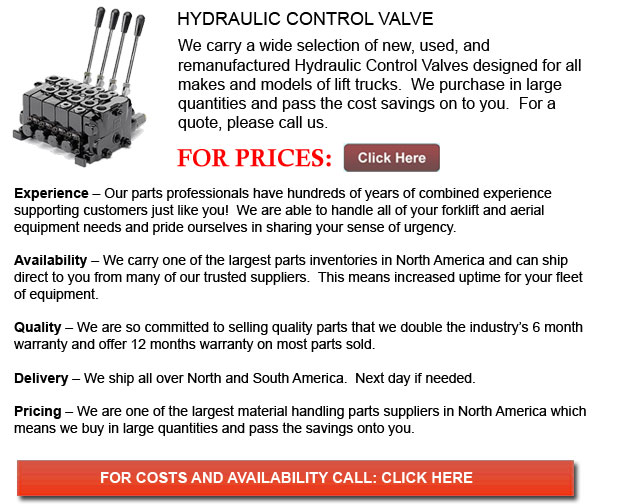
The control valve is a device that routes the fluid to the actuator. This tool will consist of steel or cast iron spool that is located within a housing. The spool slides to different locations within the housing. Intersecting grooves and channels direct the fluid based on the spool's location.
The spool is centrally located, help in place with springs. In this particular position, the supply fluid could be blocked and returned to the tank. When the spool is slid to one side, the hydraulic fluid is routed to an actuator and provides a return path from the actuator to tank. When the spool is moved to the other side, the return and supply paths are switched. As soon as the spool is enabled to return to the neutral or center location, the actuator fluid paths become blocked, locking it into place.
The directional control is typically made to be stackable. They normally have one valve per hydraulic cylinder and a fluid input which supplies all the valves inside the stack.
Tolerances are maintained very tightly, to be able to tackle the higher pressures and in order to prevent leaking. The spools would often have a clearance within the housing no less than 25 µm or a thousandth of an inch. In order to prevent jamming the valve's extremely sensitive components and distorting the valve, the valve block would be mounted to the machine' frame by a 3-point pattern.
Solenoids, a hydraulic pilot pressure or mechanical levers may actuate or push the spool left or right. A seal allows a part of the spool to protrude outside the housing where it is easy to get to to the actuator.
The main valve block controls the stack of directional control valves by capacity and flow performance. Several of these valves are designed to be proportional, like a valve position to the proportional flow rate, whereas other valves are designed to be on-off. The control valve is amongst the most sensitive and costly parts of a hydraulic circuit.
![]() Click to Download the pdf
Click to Download the pdf
Forklift Parts








Lift Parts Express Modesto
TOLL FREE: 1-888-695-7994
LOCAL: 209-343-9537
3430 Tully Road
Modesto, California
modestoforkliftparts.com
Email Us
About Us



